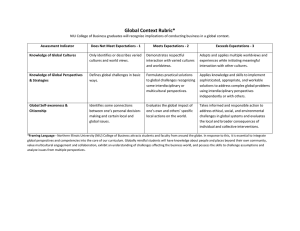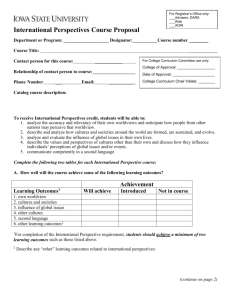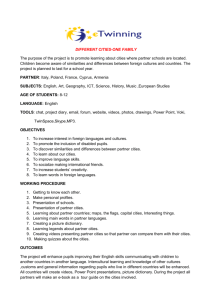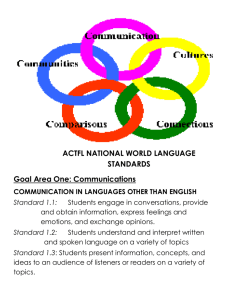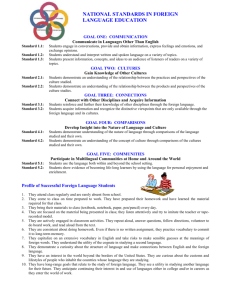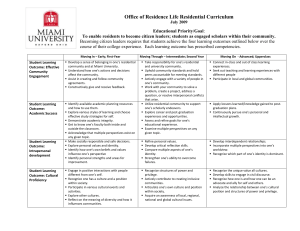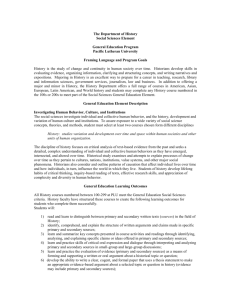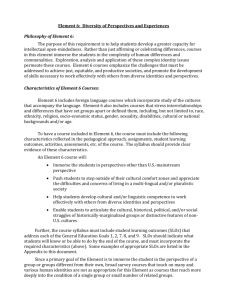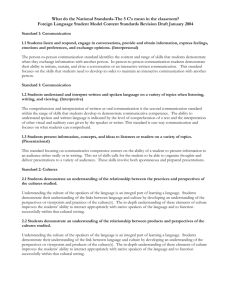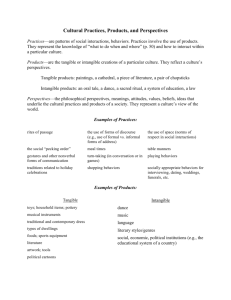culture - scpsworldlanguages
advertisement
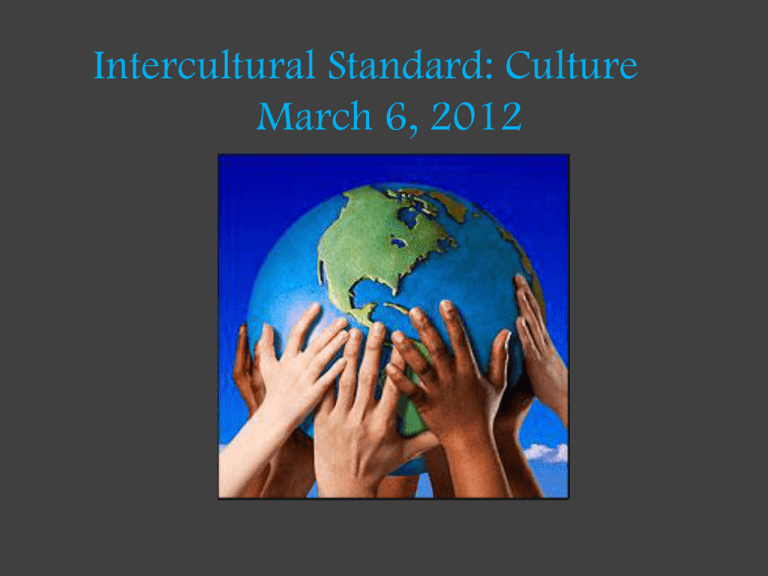
Intercultural Standard: Culture March 6, 2012 The Standard… (BEWARE: Lots of big words) • The student will be able to use the target language to gain knowledge and demonstrate understanding of the relationship among practices, products, and perspectives of cultures other than his/her own and will be able to discuss and analyze cultural practices within the political, economic, social, educational, religious, and artistic realms in the target language in order to determine their global significance. What is “Culture?” Culture – the Fifth Skill Discuss! • Is it Important to teach culture in our language classes? Why or why not? • How is culture currently taught in your classes? • Are you satisfied? Big “C” culture vs Little “c” culture “Big C” culture? • Big C culture refers to that culture which is most visible. Some visible forms of culture include holidays, art, popular culture, literature, and food. “Little c” culture? • Little c culture, in contrast, in the more invisible type of culture associated with a region, group of people, language, etc. • Some examples of little c culture include communication styles, verbal and non-verbal language symbols, cultural norms (what is proper and improper in social interactions), how to behave, etc. In American/U.S. culture, which of the below would be designated "Big C" culture, and which "Little c"? Why? Which items might be debatable as to their designation? Why? • • • • • • • • Mark Twain "Citizen Kane" a MacDonald's menu Leonard Bernstein a business card Madonna Betsy Ross' flag Radio ad • • • • • • • The Great Gatsby iPods baseball The Great Depression a bus ticket a Coke can The White House Be Careful! Generalizations vs stereotypes Ways to Teach Culture… • Art work • Commercials • Videos/movies (made in the original country) • Music videos • News casts • Pod casts • Radio • Field trips • Festivals • Maps • Songs • • • • • • • Newspapers Anecdotes Illustrations Photographs Literature Stories Realia (products from target culture) • Authentic materials (Materials used by native speakers) Videos… How to choose a video? should be current, accurate and useful should have a high audio/visual correlation: picture and sound/words should work together to enhance meaning should contain multiple "layers," where repeated viewings can increase understanding choose material with high production value (Quality) present a complete discrete segment (beginning, middle, end), are entertaining, and can maintain the interest of a native speaker. Discuss… • Have you used video in the classes you teach? For what purpose? (i.e., linguistic, cultural, just for fun, etc.) • Did you design specific activities to accompany the video, or were students only required to view the video? • Did the video activity achieve its goal? Explain what was successful and what was not. What would you change next time? How to Use Authentic materials 1. Previewing: makes the material more readily understandable to the learner 2. Task Viewing: guides the learner in peeling away the various layers of the video segment, to discover and master the linguistic and cultural material contained in it. 3. Follow-Up: helps the learner understand the broader application of the material covered in the segment What does “culture” look like at various proficiency levels? In general: Cultural Knowledge: Familiarization with selected cultural characteristics, history, values, belief systems, and behaviors of the members of another ethnic group (Adams, 1995). Cultural Awareness: Developing sensitivity and understanding of another ethnic group. This usually involves internal changes in terms of attitudes and values. Awareness and sensitivity also refer to the qualities of openness and flexibility that people develop in relation to others. Cultural awareness must be supplemented with cultural knowledge (Adams, 1995). Cultural Sensitivity: Knowing that cultural differences as well as similarities exist, without assigning values, i.e., better or worse, right or wrong, to those cultural differences (National Maternal and Child Health Center on Cultural Competency, 1997). Sample Novice Benchmarks: • Develop awareness and demonstrate understanding of some basic practices, products and perspectives of cultures where the target language is spoken. • Observe and participate in age-appropriate culturally authentic activities, such as celebrations, songs, games and dances. Sample Intermediate Benchmarks • Identify differences in cultural products, practices, and perspectives, which lead to generalizations or stereotyping among cultures. • Identify achievements of important people from different countries where the target language is spoken. Sample Advanced Benchmarks • Investigate some of the significant historic and contemporary influences from the cultures studied such as explorers, artists, musicians, and athletes. • Compare and contrast cultural products, practices, and perspectives among cultures with the same language in order to dispel stereotyping. What Culture do you want to explore and share? • List some categories of culture you would like to incorporate in your class • Include both “Big C” and “Little c” • After you find the resources, what are you going to DO with them so students really “get” it? Resources • http://coerll.utexas.edu/methods/modules/cu lture/ • http://nadabs.tripod.com/culture/ • http://www2.education.ualberta.ca/staff/olen ka.Bilash/best%20of%20bilash/culture.html
